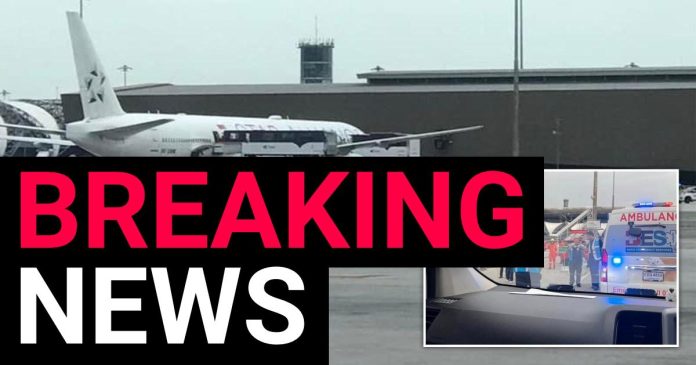Tragedy Strikes: Passenger Killed in Flight from London to Singapore
In a shocking turn of events, a passenger has tragically lost their life on a Singapore Airlines flight from London to Singapore. The devastating incident occurred when the aircraft was struck by severe turbulence, leaving others injured as well. The Singapore Airlines Boeing 777-300ER had no choice but to divert its course and make an emergency landing in Bangkok.
The airline expressed its deepest condolences to the family of the deceased, acknowledging the gravity of the situation. They are working closely with local authorities in Thailand to provide necessary medical assistance to the injured and have dispatched a team to Bangkok to offer any additional support required. The scene at the airport was chaotic, with the aircraft, registered as 9V-SWM, surrounded by ambulances.
With a total of 211 passengers and 18 crew members on board, the flight was abruptly interrupted by the unexpected turbulence. The severity of the situation became evident as the plane touched down in Bangkok at 15:45 local time (08:00 GMT). The incident serves as a stark reminder of the unpredictable nature of air travel and the potential dangers that can arise, even during routine flights.
Understanding Turbulence: The Unseen Threat in the Skies
Turbulence, often referred to as “rough air,” is a phenomenon caused by changes in wind speed and direction. It can be triggered by various factors such as thunderstorms, jet streams, temperature fluctuations, updraughts, and weather fronts. Turbulence is classified into four categories: light, moderate, severe, and extreme.
Severe turbulence poses a significant risk to aircraft, subjecting them to sudden and drastic changes in altitude, sometimes rendering them temporarily uncontrollable. The US National Weather Service describes extreme turbulence as a situation where the aircraft is violently tossed about, making it practically impossible to maintain control. It is important to note that turbulence is not solely caused by adverse weather conditions and can often go undetected by pilots or radar.
As authorities and aviation experts investigate the incident, questions arise about the precautions and measures in place to anticipate and mitigate the effects of turbulence. The aviation industry must remain vigilant and continuously improve safety protocols to ensure the well-being of passengers and crew members.
In the wake of this tragic event, our thoughts are with the family of the deceased and the injured passengers. May they find solace and strength during this difficult time.

